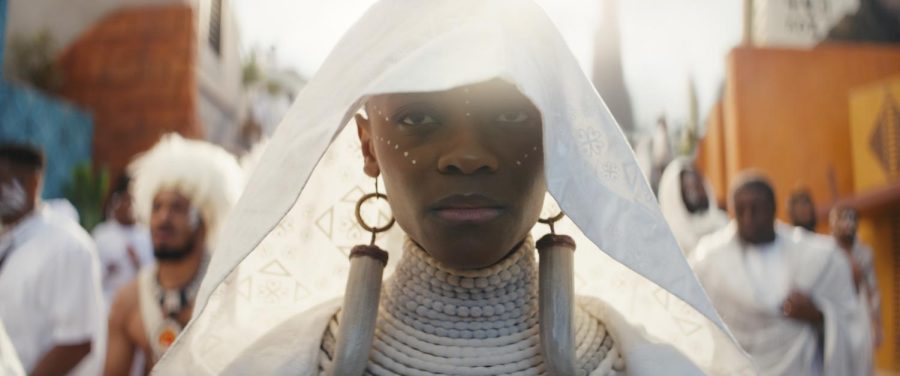‘Black Panther: Wakanda Forever’: a symbol of grief, morality and unity
November 18, 2022
The anticipated sequel “Black Panther: Wakanda Forever” is finally here. Directed by Ryan Coogler and produced by Kevin Feige and Nate Moore.After facing complications due to COVID-19 and actress Letitia Wright getting injured, the film is bringing momentum back to the box office.
It earned $180 million in ticket sales from more than 4,396 theaters in the U.S. and Canada, according to estimates from The Walt Disney Company.
“Some may have hoped for $200 million like the first film, but this is solid,” Paul Dergarabedian, Comscore’s senior media analyst, said. “This is the type of movie that theaters really need to drive audiences.”
The plot of the movie directly addresses the death of the character, King T’Challa, the Black Panther, played by the late Chadwick Boseman. Throughout the movie, it pays tribute to Boseman, who unfortunately passed away at age 43 due to colon cancer.
The movie is built around the issues of grief, morality and unity. Coolger merges both on-screen and off-screen tragedies into both entertainment and an elegy, keeping true to its connection to the real world as we saw in the first movie.
He is able to make us mourn alongside the onscreen characters. The classic opening fanfare of the Marvel logo is made up of Boseman’s scenes throughout his career as Black Panther, completely in silence letting the audience sit together in a mix of emotions.
It then drops straight into a funeral scene after Shuri, played by Letitia Wright, is unable to save her brother from his illness. The Wakandan princess spends most of the movie on a selfreflective journey, processing her grief and moving forward.
A new antagonist is introduced in this franchise. Kukulkan, or Namor, played by Tenoch Huerta Mejia, the feathered serpent god poses a threat to Wakanda.
He is the ruler of Talokan, the reimagined version of Atlantis, Coolger made. He has explained that it was “deeply inspired by Mesoamerican cultures, specifically from the Yucatán and the Mayan postclassic period.”
Although Namor and Shuri have their differences during the movie, they are able to come to an agreement towards the end of the movie. It symbolizes the distractions, grief and rage and how marginalized communities often succumb to them. Blinding both parties and setting off a war between them when they should be the closest allies, sharing solidarity together.
The movie recognizes the trauma these marginalized communities go through as they process different situations and how it affects them. Talokans were able to bond together as people through their trauma while Shuri’s grief and rage about the death of her brother leads to selfisolation. It has helped strengthen the bond between the Black, Indigenous and LatinX communities on the big screen.
The soundtrack, Black Panther The Album, Wakanda Forever, brought an added atmosphere of the different cultures to the movie. It holds music recordings made in Lagos, Nigeria, Mexico City, London and Los Angeles. Coogler and composer Ludwig Goransson managed the entire project together since there was no celebrity guest curator.
Goransson spent his time familiarizing himself with the local instruments founded in the areas to accommodate the new characters in the franchise. He also expanded the roster for new voices to bring out the best of the soundtrack.
Featured artists include: Rihanna, Tems, Pat Boy, Foudeqush and many more. Genres such as Bay area hip-hop, R&B, reggae and Mexican folk music can be found within the soundtrack.
As the credits begin to roll, Rihanna’s ballad “Lift me Up” begins to play. Coogler said that the artist made the song “for Chad.”
The songs further enhance the audience’s engagement with the movie’s consistent theme, speaking on spirituality, inheritance, and connection.
“Thematically, we wanted to move the audience from grief to celebration,” Göransson said. “When you listen to the soundtrack, you can close your eyes and relive the experience of the movie. That was the intention.”







